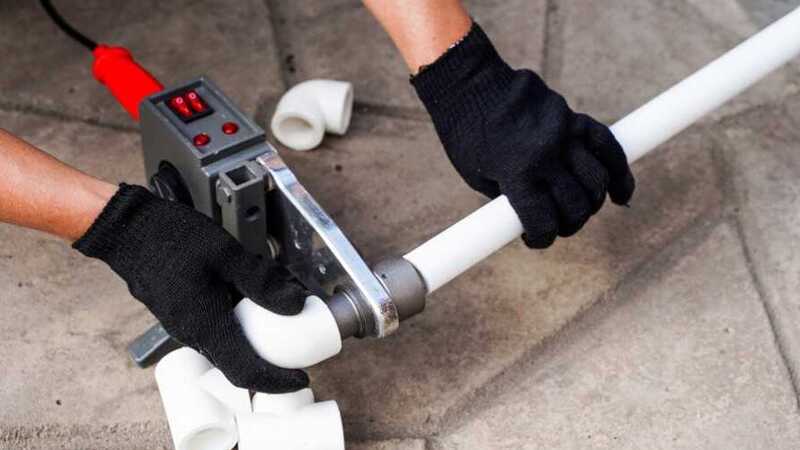Plumbing issues are never convenient. Whether it’s a burst pipe, a clogged sewer line, or aging pipelines, traditional repair methods often involve digging up yards, tearing through walls, and creating a significant mess. Enter trenchless plumbing, a modern, efficient, and minimally invasive way to fix your pipes without turning your property into a construction zone. This innovative approach is transforming how homeowners and businesses handle plumbing repairs.
In this article, we’ll dive deep into what trenchless plumbing is, how it works, its benefits, and why it’s the ultimate solution for pipe repairs.
What is Trenchless Plumbing?
Trenchless plumbing refers to advanced pipe repair and replacement techniques that avoid the need for extensive digging or excavation. Unlike traditional methods, trenchless technology uses existing entry points to access the pipes, allowing for repairs with minimal disruption.
The two most common types of trenchless plumbing techniques are:
- Pipe Lining (Cured-in-Place Pipe or CIPP)
In this method, a flexible liner coated with resin is inserted into the damaged pipe. Once in place, the resin hardens, forming a new pipe within the old one. This creates a durable, seamless, and corrosion-resistant pipeline. - Pipe Bursting
This involves pulling a new pipe through the old one while simultaneously breaking apart the damaged pipe. The new pipe takes its place, often offering enhanced durability and a larger diameter for better flow.
How Does Trenchless Plumbing Work?
The process is straightforward and requires skilled technicians and specialized equipment:
- Inspection
A small camera is inserted into the pipe to assess the damage. This step ensures precision in diagnosis and identifies the exact location of the problem. - Cleaning the Pipe
The pipes are thoroughly cleaned using hydro jetting or similar methods to remove debris, corrosion, or blockages. - Repair or Replacement
Depending on the issue, either pipe lining or pipe bursting is used to fix the problem. Both methods ensure long-lasting results without disrupting your property.
The Benefits of Trenchless Plumbing
Trenchless plumbing offers numerous advantages over traditional methods:
1. Minimal Disruption
Traditional pipe repairs often require heavy digging, which can destroy landscaping, driveways, and even sidewalks. Trenchless technology eliminates the need for excavation, preserving your property’s aesthetics.
2. Cost-Effective
Although the upfront cost of trenchless plumbing may seem higher, it saves money in the long run by reducing labor costs, cleanup expenses, and potential landscaping repairs.
3. Time-Saving
Trenchless repairs can often be completed in a day or two, whereas traditional methods may take weeks. This efficiency minimizes downtime for homes and businesses.
4. Environmentally Friendly
By avoiding extensive digging, trenchless plumbing reduces soil displacement and environmental impact. It’s a greener solution for pipe repairs.
5. Durability and Longevity
The materials used in trenchless repairs are often more durable than traditional pipes. Lined or replaced pipes can last 50 years or more, providing peace of mind for decades.
6. Versatility
Trenchless plumbing can address a wide range of issues, including leaks, cracks, root intrusions, and aging pipes. It works for residential, commercial, and municipal plumbing systems.
Signs You May Need Trenchless Plumbing
Not sure if trenchless plumbing is right for you? Here are some common signs that your pipes might need attention:
- Frequent backups or slow drains
- Persistent leaks or water damage
- Unpleasant odors coming from drains
- Increased water bills due to hidden leaks
- Discolored water or low water pressure
If you notice any of these issues, a professional plumber can assess the situation and recommend the best solution.
Why Choose Trenchless Plumbing?
Modern homeowners and businesses value efficiency, cleanliness, and cost-effectiveness, which makes trenchless plumbing a superior choice. Traditional methods may still have their place for certain situations, but for most pipe repairs, trenchless technology is the future.
Here are some scenarios where trenchless plumbing shines:
- Urban Settings: Limited space makes excavation impractical.
- Preservation Needs: Protecting landscaping, driveways, or historic sites is a priority.
- Quick Turnarounds: Businesses can’t afford long downtimes.
The Costs of Trenchless Plumbing
While trenchless plumbing may have a higher initial cost compared to traditional methods, it often proves more economical in the long run. Here’s why:
- Reduced Labor Costs: Fewer workers are required.
- Minimal Restoration: No need to pay for landscaping or property repairs.
- Faster Completion: Saves money on extended project timelines.
On average, trenchless plumbing can range from $3,000 to $20,000, depending on the size and complexity of the project. However, the long-term savings and durability make it a worthwhile investment.
Conclusion: A Mess-Free Future for Pipe Repairs
Trenchless plumbing is more than just a trend—it’s a game-changer for homeowners and businesses alike. By offering a less invasive, quicker, and cost-effective solution, it has redefined how we approach plumbing repairs.
If you’re dealing with aging or damaged pipes, consider trenchless plumbing for a solution that prioritizes efficiency and minimal disruption. Reach out to a professional plumbing service to explore this innovative technology and enjoy peace of mind knowing your pipes are fixed without the mess.
For more info visit Stylish Home

